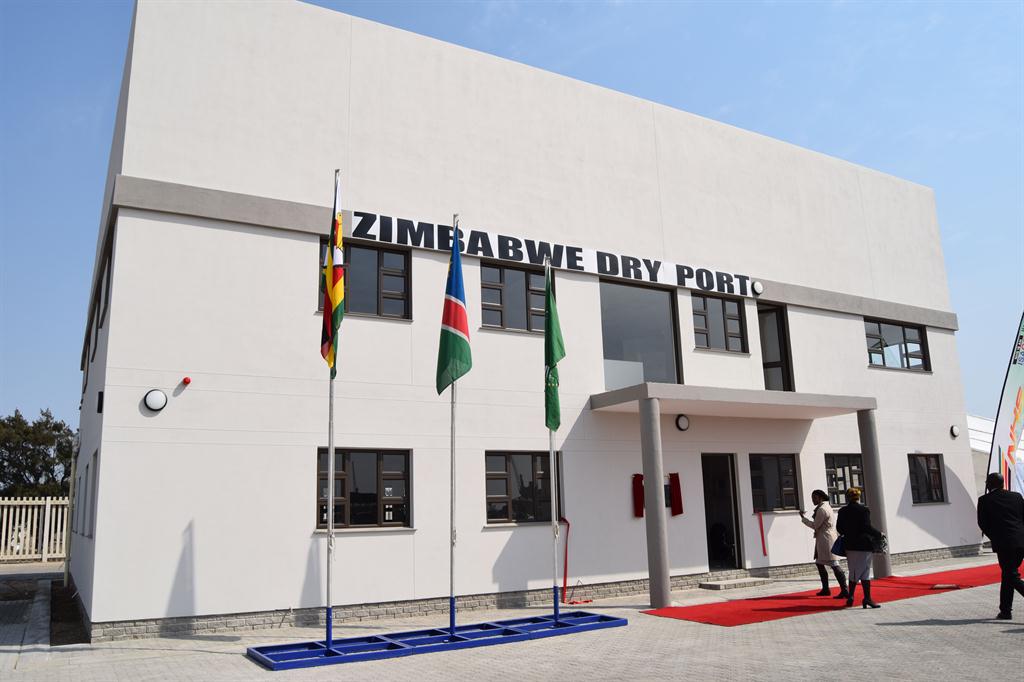Zim dry port boon for economic growth
THE Zimbabwe dry port commissioned by President Mnangagwa at Walvis Bay in Namibia in 2019 to provide a strategic and cheaper gateway to the Atlantic Ocean is set to boost the country’s economy through enhanced international trade.
The new development signifies the beginning of the Walvis Bay corridor road show, which was expected to have been held from June 18 to July 3 this year but was postponed indefinitely due to Covid-19.
A dry port is a city away from a sea where formalities for exports or imports through the ports are completed and shipments sent from there to sea ports for loading on ships where no more paperwork is required.
The port allows Zimbabwean traders to be competitive in international markets by importing and exporting directly to Europe, West Africa and America using ocean cargo services.
The dry port was built on an estimated 19 000 square metres leased to Zimbabwe by Namibia on a 50-year lease.
Speaking at the information session on promoting the port of Walvis Bay as a preferred logistics hub to the Zimbabwe market in Harare yesterday, Deputy Minister of Foreign Affairs and International Trade David Musabayana said the ministry was excited with the progress in operationalisation of the Zimbabwe dry port courtesy of the Namibian
government.
Zimbabwe as an economy needed to focus on intra-Africa trade pitched by President Mnangagwa to attain an upper middle income economy by 2030 and Walvis Bay was the most obvious port for trade with the western side of Africa.
“The trade should also facilitate our export strategy 714. To achieve that export strategy, we need an efficient and effective transport system. So we need to be linked within Africa and outside Africa. At the moment we have Durban and Beira as the ports of entry but we need more redundancy in terms of that network and the Zimbabwe dry port in Namibia is an alternative route. It is a green ocean where there is less competition.”
He noted that the use of the dry port would push trade.
“The successful implementation of the ‘dry port’ concept will have joint effects of lessening congestion, alleviating pressure on storage space and reducing handling operations in the Walvis Bay port, as well as delivering lower transaction costs to traders,” he said.
“The dry port also benefits Namibia by having increased volumes of freight cargo moving through that port through the capturing of cargo closer to source or further up the supply chain.
“This means the growth of the corridor resulting in increased revenue for the Namibian government. It will also assist in easing congestion on the Walvis Bay port as well as helping ease smuggling.
“As Zimbabwe focuses more on trade as a stimulant for economic development, shifting focus from the traditional pillars such as FDI and multilateral agency lending, it is imperative for Zimbabwean merchants to be careful not to mishandle the courtesy and hospitality of their host.
“This means being vigilant against nefarious activities such as smuggling, illicit trade in drugs, arms and ammunition, human trafficking and other vices.” Deputy Minister Musabayana said sound infrastructure development was a prerequisite to the successful implementation of the dry port.
He said the recent operationalisation of the Kazungula bridge will open new opportunities for the dry port in a very significant way. “On the soft infrastructure aspect, there will be a need for greater coordinated border management among Namibian, Botswana and Zimbabwean customs officials as well as developing the existing bilateral trade agreements and corporation frameworks that are in place,” he said.
“This will be in addition to finding creative and holistic strategies to assist Zimbabwean traders to be competitive in international markets. There is a greater scope for both private and public sector involvement in all aspects of ‘dry port’ and corridor development and implementation.
“Government’s role would mainly focus on formulating and maintaining the appropriate policy and regulatory controls to both foster and facilitate suitable corridor developments while delivering on social, economic and environmental goals.”
Deputy Minister Musabayana said Zimbabwe was ready to work with Namibia to ensure bilateral trade increased as well as transit trade. Namibian ambassador Nicklaas Kandjii said the dry port showed the seriousness of the
cooperation between Zimbabwe and Namibia.
“This means a lot for both countries. The bilateral relations between Zimbabwe and Namibia are very excellent politically but economically we need to match this relationship so therefore this is our effort to strengthen trade and investment.
“It is also providing an opportunity to link Zimbabwe to our port to facilitate exports to Europe, West Africa and America. So this is a very important event for both countries,” he said.-herald.co.zw








